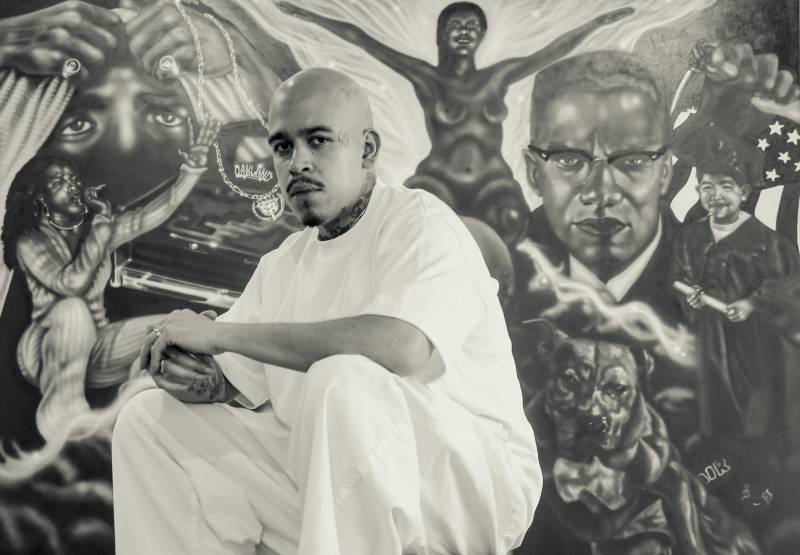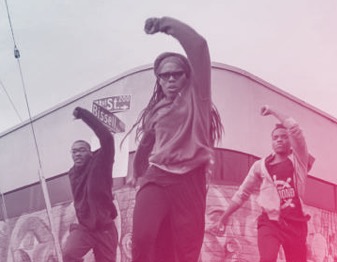Though not every artist is from “the struggle,” anyone who’s ever survived tough times is inherently a creative person.
That notion is at the heart of Esteban Raheem Abdul Raheem Samayoa’s artwork. A visual artist from Sacramento who lives in Oakland, Samayoa’s pieces depict ethereal images of lowriders on Daytons, dogs barking, tatted homies, smiling kids, Black revolutionaries and Brown pride.
On March 22, a solo exhibition of Samayoa’s work, titled Blood Be Water, opens at the Institute of Contemporary Art San José.
“It’s a lot of storytelling,” Samayoa says about his art. “And the beautiful thing about it is, it’s not just my story.”
A quiet kid who didn’t have much family support growing up, Samayoa leaned on neighbors and community members for structure. Those relationships broadened his perspective on life. “So I often tell a lot of these stories within my paintings that seem a little like nostalgic, and even have a spiritual presence,” he tells me during a recent phone conversation. “But it’s very universal, you know, something that a lot of people can relate to.”

What’s more relatable than creating out of necessity?


